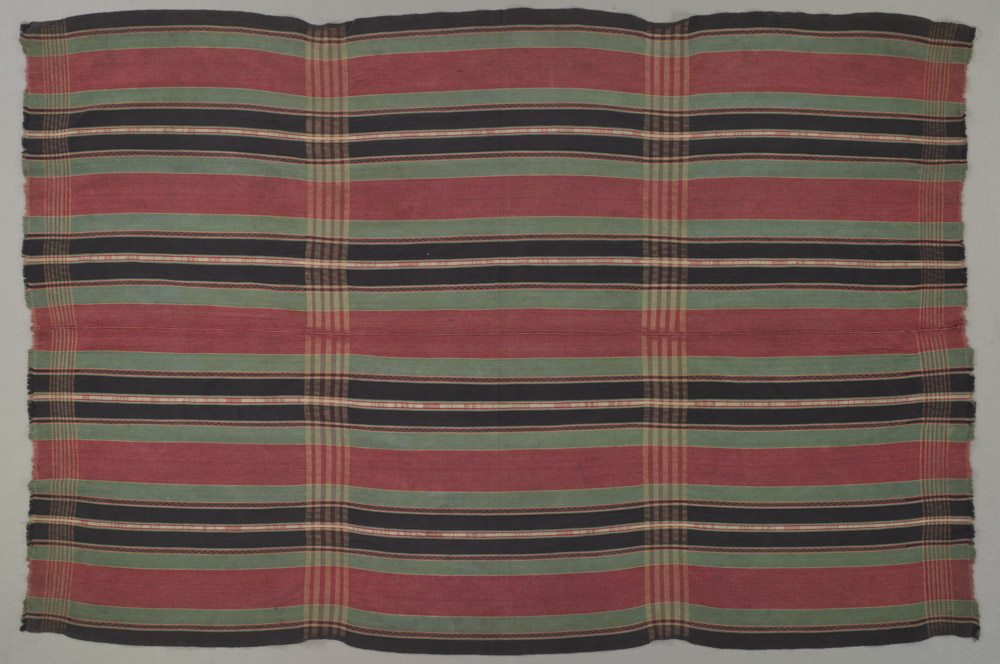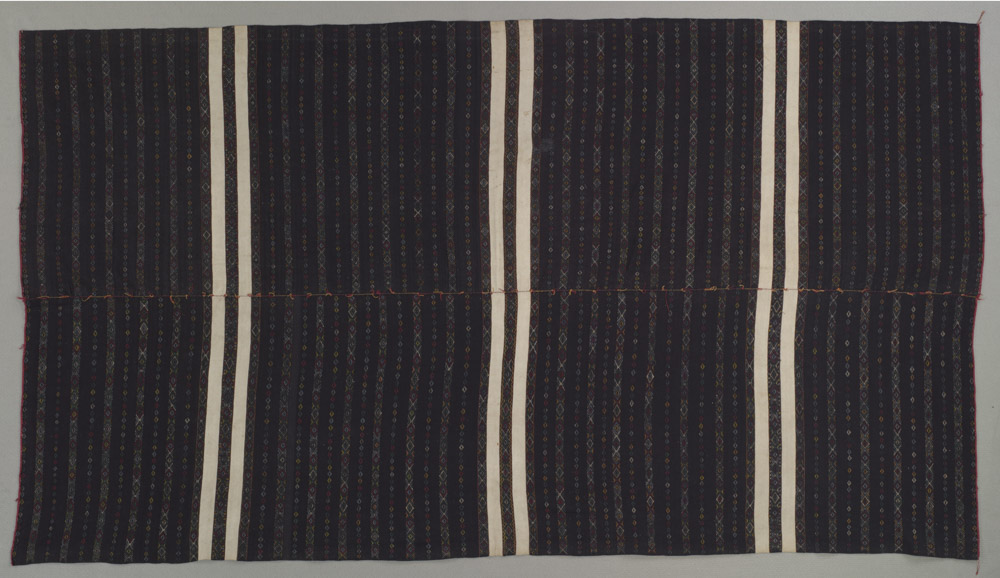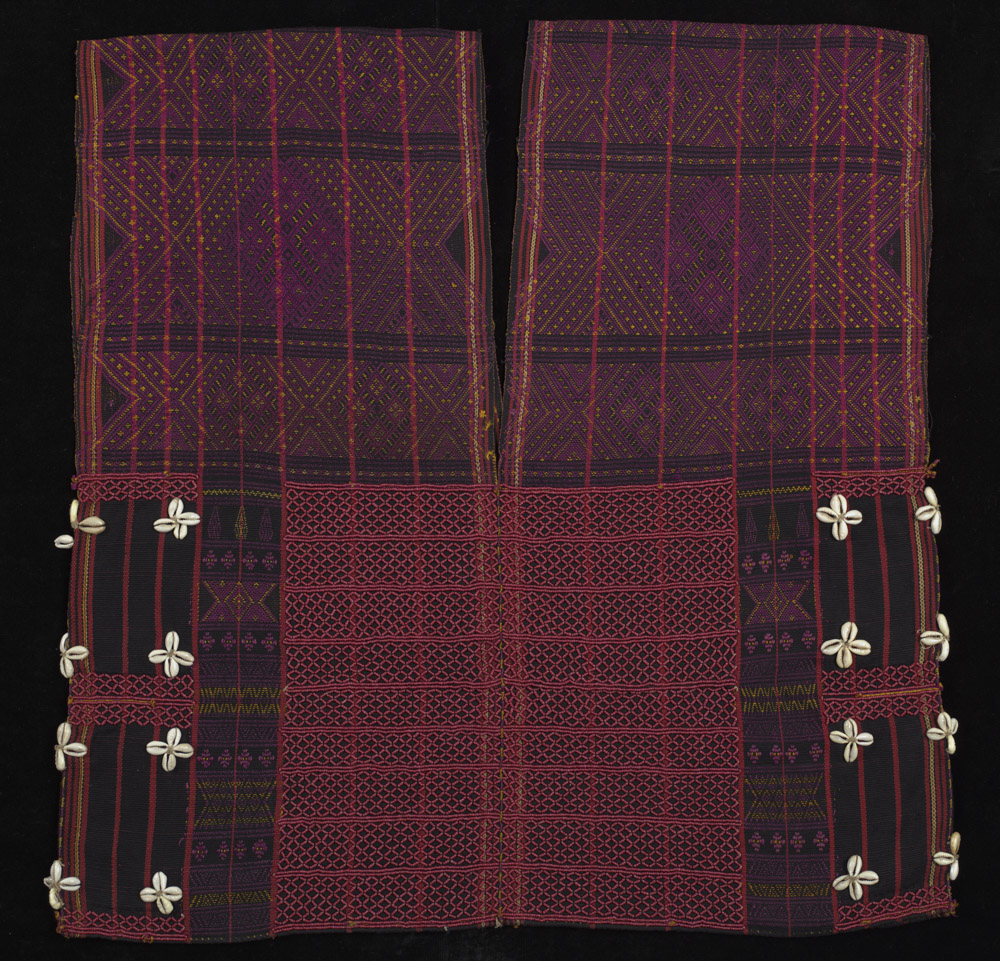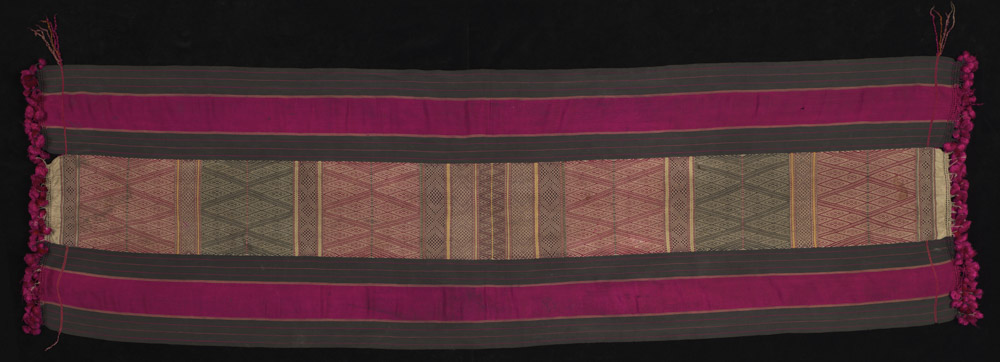Art of the Zo at The Philadelphia Museum of Art

Woman’s Wedding Mantle (Tawnok). 1900-1930. Northern Chin people, Tiddim group. Cotton warp-faced plain and twill weave, 72 x 47′ (182.9 x 120.7 cm). Philadelphia Museum of Art. Gift of David W. and Barbara G. Fraser, 2014.
From 11th November – 20 March 2016, The Philadelphia Museum of Art presents ‘Art of the Zo: Textiles from Myanmar, India, and Bangladesh’, an exhibition of woven textiles made by the Zo peoples (also known as Chin, Lai or Kuki). The exhibition comprises works from the Museum’s collection of costume and textiles supplemented by gifts and loans from David W. and Barbara G. Fraser.

High-ranking Man’s Mantle (Can-lo Pu an), 1900-1940. Northern Chin people, Haka group. Cotton and silk warp-faced plain weave with discontinuous 2-faced supplementary weft patterning, 6’5″ x 43″ (194.9 x 109.9 cm), Philndelphia Museum of Art
The Frasers are the authors of Mantles of Merit: Chin Textiles from Myanmar, India, and Bangladesh (2005). They received the annual Ancient & Modern art research award in 2005 which part funded further fieldwork in northeastern India into the roots of Chin textile culture (see p. 60, HALI 149). The Zo peoples, of Tibetan-Burmese origins comprise about 50 separate groups, culturally related through affinities of language, the values surrounding their textiles and the structure and technique of their weavings. Prior to the arrival of missionaries in the mid-1800s, they worshiped ancestral spirits and spirits dwelling in nature but today most are Christian.

Woman’s Ceremonial Tunic (Kor), 1940s-1960s. Northern Chin people. Haka group. Warp and weft-faced silk plain weave with discontinuous 2-faced supplementary weft patterning and twill weave, length: 17″ (50 cm). Philadelphia Museum of Art

Highlights of this exhibition include a warp-faced cotton blanket that would have been used sacrificial ceremonies and a Dai woman’s wedding blanket, created for a bride by her mother. Shoulder cloths that double as baby carriers decorated with glass beads and metal bells and a variety of men’s loincloths are also included.
David Fraser stated: “These extraordinary textiles offer us rare and exceptional beauty. As records of the artistic traditions that illuminate Zo values, they also are highly valuable in preserving a living culture. Among the Zo, men create the looms, and they also make utilitarian baskets. The women create the art and they are much-respected for it.”

























Comments [0] Sign in to comment